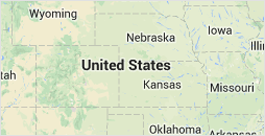Eldon Broady
PHONE NUMBER : -----------
Map

The Advantages of a Cloud-Based Graph Database
If you're looking to use GraphQL for your application, then you might want to consider using a cloud-based graph database. But how does a cloud-based graph database differ from the typical setup? Does having a graph database that works on the cloud have advantages that make it a better choice? The short answer is yes, but you might be wondering about these various advantages. In this article, we'll discuss how using this kind of database can benefit you.
Cloud-Based Provides Speed, Iteration, and Evolution
Using a cloud-based graph database can truly change the way your application runs. It can help you create a clean and lean codebase, significantly cutting down any access bloat you might have in your current codebase. Your data models can be simplified and your application can evolve. Not only that, but it makes your application able to make queries effectively and efficiently. It also makes GraphQL extremely scalable. You can go from a small project to a much bigger project with relative ease.
Build Your Applications Using A Native GraphQL Database
Most GraphQL databases are built on existing databases. This means you might have to know languages other than GraphQL. With a cloud-based graph database, this wouldn't be the case. This means you don't have to mess with any underlying structures when you build with GraphQL. You simply build your GraphQL schemas and they work without you having to code around the typical databases. This makes your experience with GraphQL a much simpler experience. It also makes it extremely easy to make changes on the fly and evolve your app over time. You don't have to deal with N+1, you just build your GraphQL based app.
Should I Use a Cloud-Based Graph Database?
If you use GraphQL, then a cloud-based database will make your experience exponentially easier. It's definitely worth looking into and giving a try. You'll quickly be able to see the advantages for yourself and you'll wonder why you haven't always been building with GraphQL this way. It can truly make a developer's experience using GraphQL much simpler and even more enjoyable.
Author Resource:-
Eldon Broady writes about database technologies, graph database, and modern API tools. You can find his thoughts at GraphQL blog. To learn about graph databases, visit this website.
